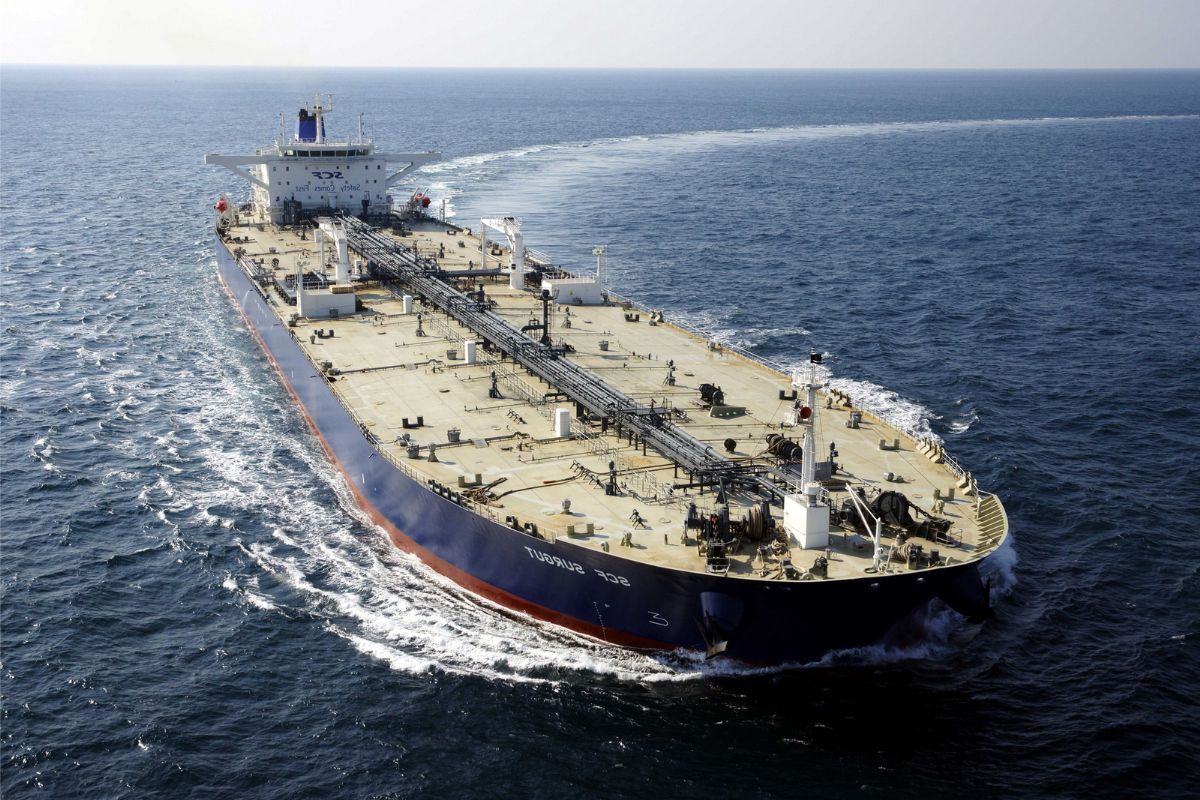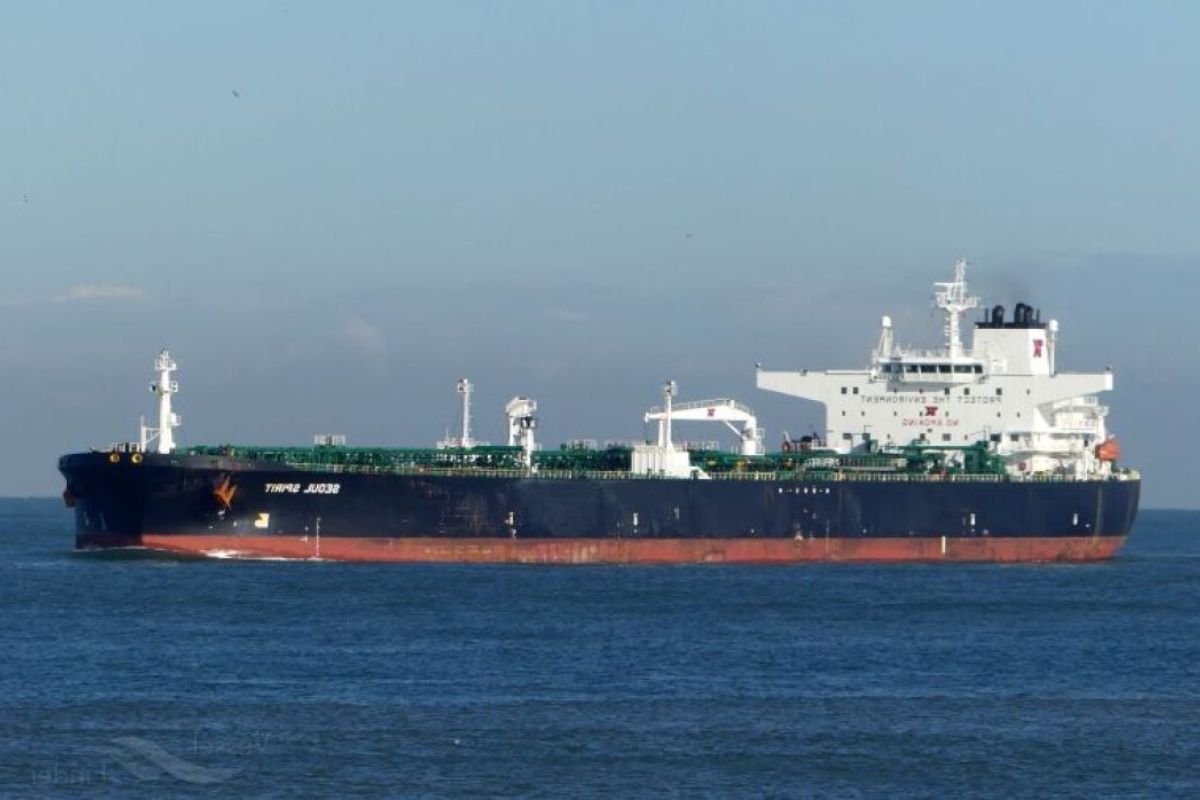Russian Oil Quandary: The recent predicament of 14 stranded Russian oil tankers languishing in the Pacific Ocean has ignited concerns and speculation within the global energy landscape. This saga, born out of a complex web of U.S. sanctions and payment disputes, has thrust the spotlight on Russia’s oil industry, raising questions about its stability and future prospects.
As we delve into the intricate details of these stranded tankers, their logistics, and the wider geopolitical and economic ramifications, it becomes evident that this situation is not merely a localized incident, but rather a microcosm of the intricate dance between global energy markets and political maneuverings.
In this discussion, we will explore the catalysts behind this predicament, the potential consequences for Russia’s oil industry, and the far-reaching implications for the international energy landscape.
Key Takeaways
- Adverse weather conditions and bureaucratic hurdles have contributed to the challenges faced by the stranded tankers off South Korea.
- U.S. sanctions on vessels transporting Sokol crude oil, companies involved in Russian oil trade, and payment restrictions for Russian oil companies have acted as catalysts for the stranded tankers.
- Exxon Mobil’s exit from the Sakhalin-1 Project has resulted in declining oil output and revenue losses for Russia.
- The logistics of the Russian oil industry have been complicated, with the stranded tankers unable to offload cargo due to lack of buyers, highlighting the need for alternative buyers or storage facilities.
Stranded Tankers off South Korea: A Critical Overview
The current situation of the stranded tankers off the coast of South Korea demands a critical overview of the challenges faced and the potential implications for Russian oil exports. With over a dozen tankers carrying Sokol grade crude oil, totaling 1.3 million metric tons, stuck in limbo, it is clear that this is a significant issue that cannot be ignored.
Also Read: Seas of Strife: West’s Gambit to Checkmate Russian Oil Moves
The challenges these tankers face are immense – from adverse weather conditions to bureaucratic hurdles. These tankers are not just stuck in the Pacific, but represent a potential blow to Russian oil exports.
The implications of this situation are far-reaching, with the potential to disrupt global oil markets and impact the already fragile Russian economy. It is crucial that immediate action is taken to resolve this issue and prevent further damage to the Russian oil industry.
U.S. Sanctions and Payment Issues: Catalysts for Stranded Tankers
With the stranded tankers off the coast of South Korea posing a significant threat to Russian oil exports, it becomes evident that the catalysts for their predicament lie in the impact of U.S. sanctions and payment issues. These factors have created a perfect storm, disrupting the smooth flow of Russian oil to international markets.
Here are four key reasons why U.S. sanctions and payment issues are at the heart of this crisis:
- Sanctions on vessels: Washington’s sanctions on vessels involved in transporting Sokol crude oil have severely limited the options for shipping companies, making it difficult to find willing carriers.
- Sanctions on companies: The U.S. sanctions have targeted companies involved in the trade of Russian oil, creating a climate of fear and uncertainty that has deterred potential buyers.
- Payment restrictions: The financial sanctions imposed by the U.S. have made it challenging for Russian oil companies to receive payment for their exports, further complicating the situation.
- Dependent on Asian markets: Russian oil exporters heavily rely on Asian markets, particularly China and South Korea. The impact of U.S. sanctions on these key destinations has exacerbated the problem, leaving tankers stranded and oil revenues stranded.
Sakhalin-1 Project and Exxon Mobil’s Exit: Background and Consequences
Amidst the tumultuous landscape of Russian oil production, the Sakhalin-1 Project stood as a testament to Exxon Mobil’s once dominant presence, until its abrupt exit following Russia’s invasion of Ukraine in 2022. This venture, initially launched in the early 2000s, was a joint effort between Exxon Mobil, Rosneft, and several other international partners. Located off the eastern coast of Russia, the project aimed to tap into the vast oil and gas reserves of the Sakhalin Island.
With estimated recoverable resources of over 2.3 billion barrels of oil, it was poised to be a game-changer for both Exxon Mobil and Russia’s oil production. However, Exxon Mobil’s withdrawal from the project in the wake of geopolitical tensions has had dire consequences. The production levels plummeted to nearly zero, leaving Russia grappling with declining oil output and revenue losses. The table below provides a snapshot of the key details surrounding the Sakhalin-1 Project.
| Project Name | Year Launched | Estimated Recoverable Resources (in billion barrels) |
|---|---|---|
| Sakhalin-1 | Early 2000s | Over 2.3 |
The Stranded Tankers: Logistics and Vessel Details
In the complex world of Russian oil production, the plight of 14 stranded tankers in the Pacific has created a logistical nightmare. Here are four key details about the stranded tankers and the challenges they pose:
- Vessel Types: The 14 stranded tankers include 11 Aframax vessels and three very large crude carriers (VLCCs). These vessels are crucial for transporting large quantities of oil.
- Current Status: The tankers are stuck in limbo, unable to offload their cargo due to a lack of buyers. This has resulted in the vessels acting as floating storage.
- Stored Volumes: The VLCCs, namely La Balena, Nireta, and Nellis, are storing significant volumes of oil. This further exacerbates the oversupply issue, adding to the already strained global oil market.
- Logistical Challenges: The stranded tankers complicate the already intricate logistics of the Russian oil industry. Finding alternative buyers or arranging for storage facilities are daunting tasks that require swift action and coordination.
The stranded tankers highlight the fragility of the oil market and the need for effective logistics management in the midst of unprecedented challenges.
Global Impact and Future Considerations: Geopolitical and Economic Ramifications
The stranded tankers in the Pacific have triggered a ripple effect that extends far beyond the confines of the Russian oil industry, illuminating the intricate web of geopolitical and economic ramifications that now loom large on the global stage.
The impact of these stranded tankers is not limited to Russia alone. It has the potential to disrupt global energy markets and has raised questions about the strategies that key players, such as the United States and Russia, might adopt in response to this complex issue. To understand the wide-ranging implications, it is essential to consider the geopolitical and economic factors at play. The following table provides an overview of these factors:
| Geopolitical Ramifications | Economic Ramifications | Future Considerations |
|---|---|---|
| Increased tensions | Market volatility | Energy diversification |
| Strategic maneuvering | Trade implications | Technological advances |
| Regional power dynamics | Currency fluctuations | Environmental impact |
As the situation unfolds, it is crucial for global stakeholders to carefully navigate these challenges and seek sustainable solutions that balance economic interests with geopolitical realities. Failure to do so could have far-reaching consequences for the stability of the global energy landscape.
Conclusion Of Russian Oil Quandary
The saga of the 14 stranded oil tankers in the Pacific serves as a stark reminder of the complex web of geopolitical and economic factors that shape the global oil industry. The U.S. sanctions and payment issues have further exacerbated the situation, highlighting the vulnerability of oil trade in the face of political tensions.
As we navigate the future, it is crucial to consider the lasting ramifications and potential disruptions that such incidents can have on a global scale.
Our Reader’s Queries
Q1 Which Indian companies buy Russian oil?
A IOC and BPCL, among the buyers of Russian oil, are currently examining the legal and financial consequences of this action, according to an official statement.
Q2 What is the largest private oil company in Russia?
A Transneft stands as one of the globe’s major oil trunk pipeline firms, facilitating the transportation of over 82% of Russia’s oil across a vast network exceeding 67,000 kilometers of pipelines.
Q3 Who owns Russian oil and gas?
A Rosneft holds the position as the largest Russian oil company, succeeded by Lukoil, Surgutneftegaz, Gazprom Neft, and Tatneft. The state-owned monopoly Transneft manages all oil trunk pipelines, excluding the Caspian Pipeline Consortium. Additionally, its subsidiary Transnefteproduct oversees the ownership and operation of oil products pipelines.



